St Augustine Grass, also known as buffalo turf or buffalo grass, is a popular hard-wearing lawn grass in warmer climes.
It’s popular because it is highly adaptable and relatively drought tolerant and for most yards, you’re unlikely to run into problems with it.
Despite being easy to grow and relatively low maintenance, there are some circumstances why your St Augustine grass may turn yellow.
If you are noticing yellowing or browning of your St Augustine grass, we share the likely causes and how you can remedy them for a healthy lawn.
Why your St Augustine grass is turning yellow
A yellow-looking lawn is the last thing you want to see in your yard, and for St Augustine grass, yellow blades are an indicator of stress.
If you’re working out what’s going on with your grass, look at these common reasons.
1. Fungal disease
These common warm-season fungal diseases may be the underlying cause of your discolored lawn.
Gray Leaf Spot
The fungus Pyricularia grisea (Magnaporthe grisea) is responsible for a fungal lawn infection that takes advantage of wet weather and subsequent high humidity to spread in your lawn in late summer and autumn.
St Augustine grass cultivars vary in their level of resistance to this fungus.
It produces discoloration of the blades, slowed growth, thinning, and balding of the lawn as it dies off.
Take-all Root Rot (TARR)
Gaeumannomyces graminis var. Graminis is a fungus that normally lives on the roots of St Augustine grass.
For the majority of the time, your lawn and this fungus will get along fine, but problems start when there is excessive moisture and humidity or the grass is stressed.
This leads to the proliferation of this fungus as it infects the roots and spreads upwards towards the blades.
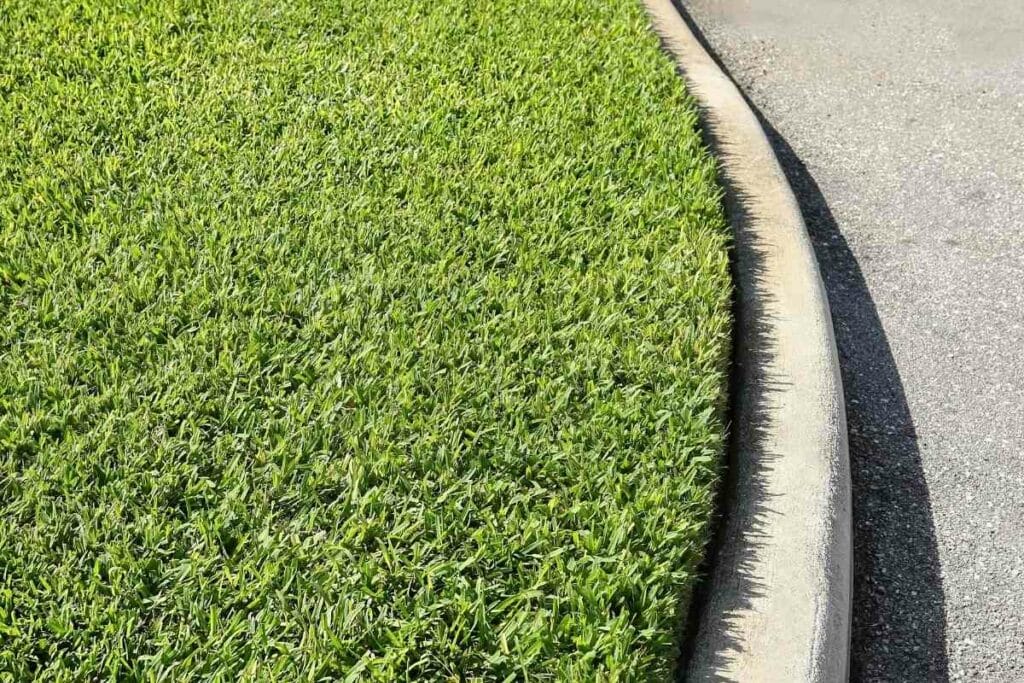
The above-ground manifestation of this disease is usually apparent when the roots have become severely damaged and can be difficult to control.
Infected St Augustine grass has yellow or light green patches that can be up to several feet in diameter.
Pythium Root Rot
Water mold that is present in the soil can infect and damage the roots and blades of your grass in sustained wet conditions.
Like TARR, Pythium Root Rot targets the roots first, producing discoloration and yellowing of the grass.
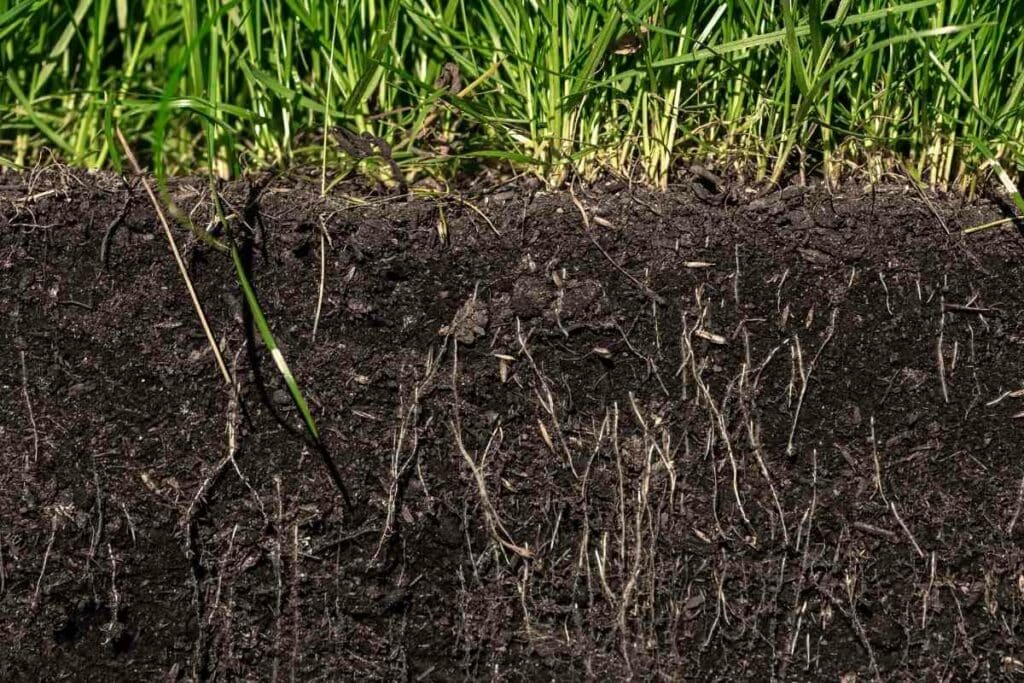
Thankfully, this fungal infection produces an unsightly lawn but does not kill the lawn as the roots do not die.
- You can do a few things if you want to prevent the disease:
- Improving drainage and water when you notice wilt symptoms and dry soil.
- Avoid watering too much. You don’t want your soil to be wet all the time.
- Mowing frequently might be the solution if you cut the grass at the proper height (it’s best to remove only one-third of the leaf blade).
- Applying the proper fertilizer (use only the ones with an equal amount of nitrogen and potassium.
Treating fungal diseases in St Augustine grass
Tackle these fungal infections early by spot-treating an infected patch of lawn as soon as possible with a fungicide.
Avoid mowing the infected area as this will spread the disease throughout your lawn.
You can make your St Augustine grass more resilient against fungi by tackling other stressors of your lawn like the application of herbicides for weeds, or minimizing watering times so your blades are not wet for a prolonged period.
Also, improve the aeration and drainage as much as possible.
If the roots are infected, use foliar feeding to nourish and strengthen your grass so it can recover.
2. Iron deficiency
When faced with St Augustine grass turning yellow, micronutrient deficiencies should be high on your list of suspected causes.
Iron chlorosis causes the grass blades to turn pale green, yellow, or even white.
This is because St Augustine grass needs iron for the formation of chlorophyll, the plant cell organelle that undertakes photosynthesis.
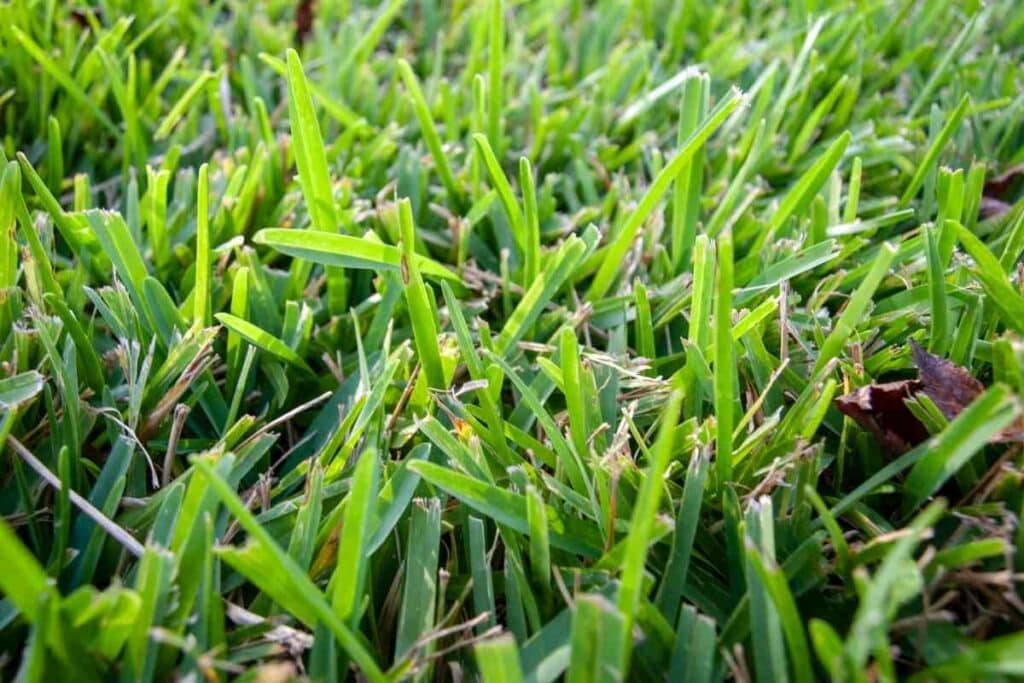
Iron is also required for nitrogen breakdown, so it’s easy to see that a deficiency of iron will stress and deteriorate your lawn.
Your grass needs to extract sufficient iron from its soil. A healthy lawn requires an iron concentration of up to 100 parts per million.
If nematodes or fungi damage the roots, their ability to use iron will be impaired, but it is most often a variety of soil conditions that hinder this process.
Factors that reduce the availability of iron in your soil include:
- Alkaline soil pH: iron chlorosis is prevalent in soils that have a pH between 7.2 and 8.3
- High concentrations of added organic matter
- Excessive soil moisture
- Soil salinity
- High phosphorus concentrations
- Excessively low or high soil temperatures
Manage St Augustine grass iron deficiency
Address iron deficiency by investigating and managing the underlying problems.
You can test the pH of the soil and nitrogen or sulfur to lower the pH. Omit phosphorus when you fertilize the lawn to make more iron available.
You can also add iron to the soil as a supplement in the areas that are becoming discolored.
3. Too much water
As a warm season grass, St Augustine grass will crave moisture in its soil, but excessive rainwater or watering tips the balance of problems for this grass, causing yellowing to appear and take hold.
Remember that St Augustine grass is a coastal grass species that suits sandy fast-draining soils.
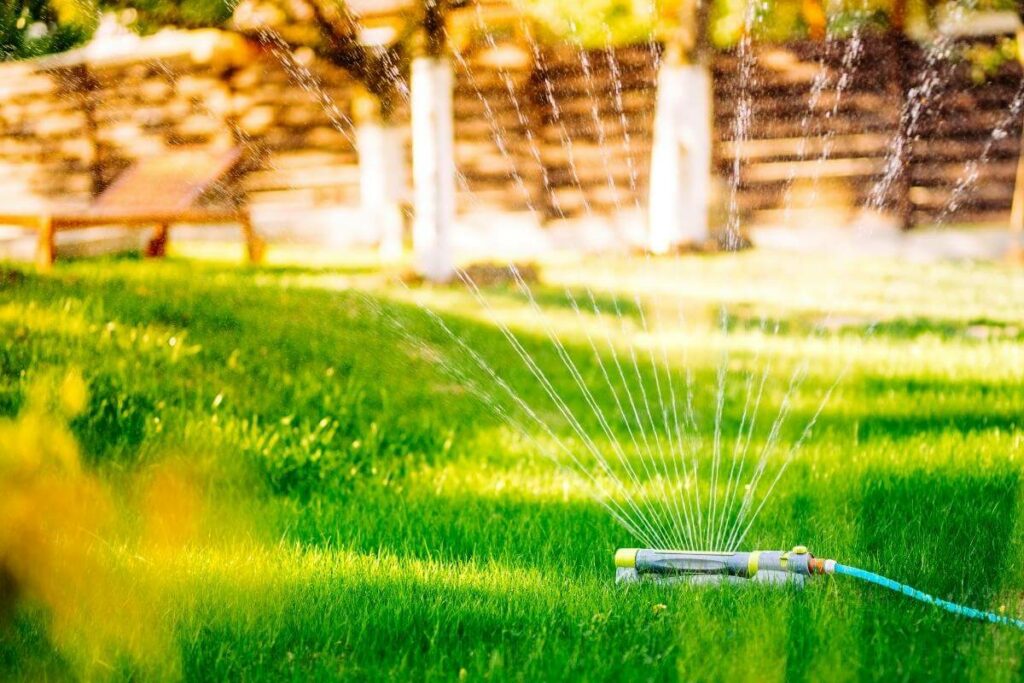
Too much water in the soil of your lawn creates multiple problems including:
- causing fungi and diseases to thrive and spread
- creating shifts in nutrient levels, washing them away or leaching them in to deeper soil beyond the reach of the roots of the grass
- starving the roots of oxygen and nutrients, predisposing them to rot
Tackle these problems by being careful with how you water and feed the lawn.
Schedule watering and don’t leave the sprinklers running for prolonged periods to keep the blades and roots excessively wet.
Using slow-release fertilizers can help to minimize leaching. You can also boost the drainage of your lawn by regularly aerating it or even installing a drainage system if it is frequently waterlogged.
You may even consider relaying the entire lawn, and adding sand to the soil before you replace the turf.
4. Drought
Though St Augustine grass is popular in warmer climates, it is actually not that drought tolerant, so you may have a yellow lawn because it is struggling in the summer heat.
If you are maintaining your lawn in temperatures towards the upper end of its temperature range of 80 to 100°F (26 to 37.8°C) this grass will deteriorate if it does not have sufficient water on hand.
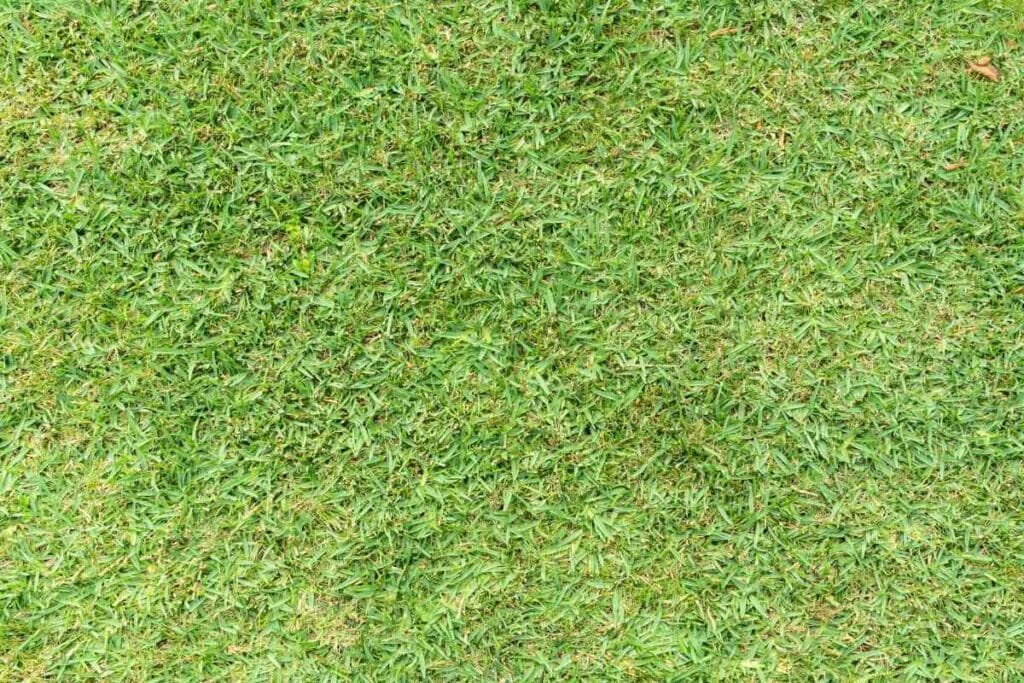
The soil can quickly dry out and crack around the grass, deteriorating its absorption of essential micronutrients and yellowing the blades.
A sustained period of hot, dry weather definitely requires a targeted program to protect your lawn.
Here are some helpful things you can try:
- Water the lawn at least six times per week between 4 am and 6 am. Extend the watering period if your lawn if it continues to be thirsty.
- Don’t water during the hottest part of the day as it will evaporate before the grass can absorb it. Don’t water your lawn at night because it can promote fungal disease.
- Leave your grass longer than normal, to promote deeper roots and help the lawn store moisture.
- When you mow, ensure that your blades are extra sharp so that it cuts cleanly and the grass loses less water.
- Leave your grass clippings on the lawn as a mulch to help it retain water.
- Skip fertilizing because it makes the grass use more water.
5. Nitrogen balance
Too much or too little nitrogen can also turn your St Augustine grass yellow.

Perhaps you have noticed that when dogs pee on a lawn, it yellows or even kills the grass. This is because the dog pee is chock full of ammonia (nitrogen) which can literally burn your grass.
Overfeeding with nitrogen feed can be just as harmful.
Excess soil nitrogen predisposes the lawn to diseases and thatch buildup that can suppress aeration and lawn irrigation.
Conversely – Nitrogen deficiency is just as damaging to your St Augustine grass. Along with yellowed leaves, you’ll see the thin growth of the lawn.
Heavy rain and over-watering can leach nitrogen and other vital nutrients from the soil, leaving your lawn starved of nutrients.
This can be remedied by using a slow-release or water-insoluble nitrogen fertilizer that won’t be leached from the soil.
Rounding up
As you can see, there are a range of reasons why your St Augustine grass is turning yellow and the main underlying causes are easy to exclude.
Though it is hard-wearing turf grass, your lawn will still need some TLC.
Attentive lawn care can help you stay ahead of the problems that cause yellowing, and if they occur, help you get your lawn growth back on track before a die-off occurs.
Though there are better things to do with the summer the additional effort, or perhaps the labor of a mulching robotic mower, should keep your St Augustine grass in tip-top condition!
